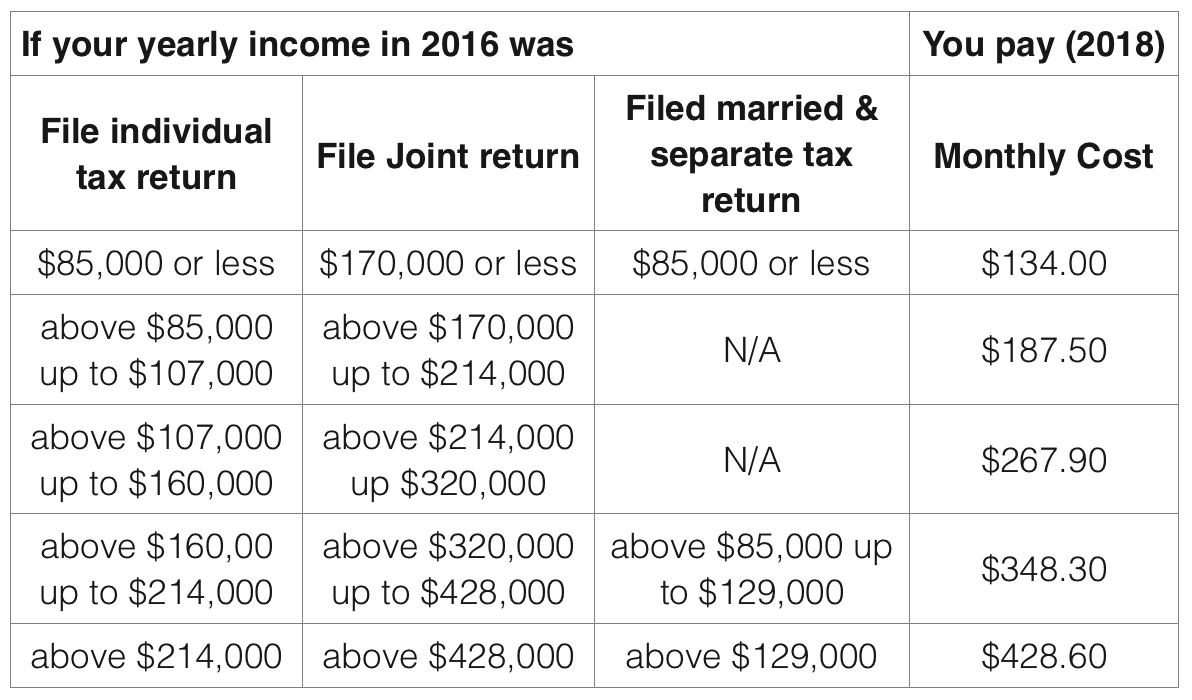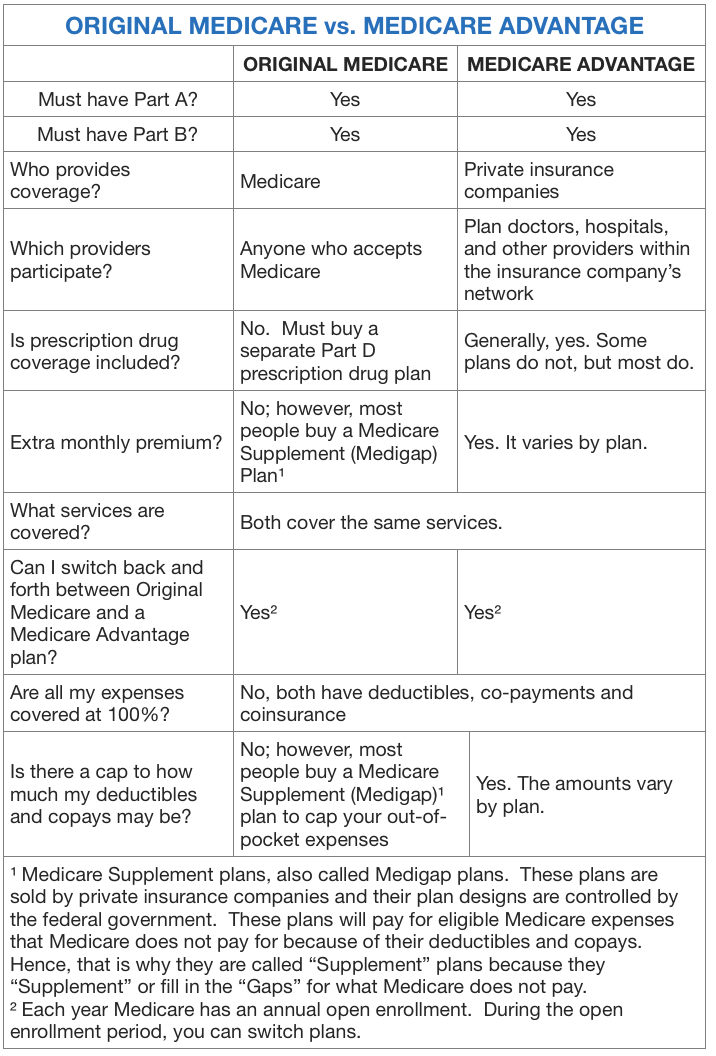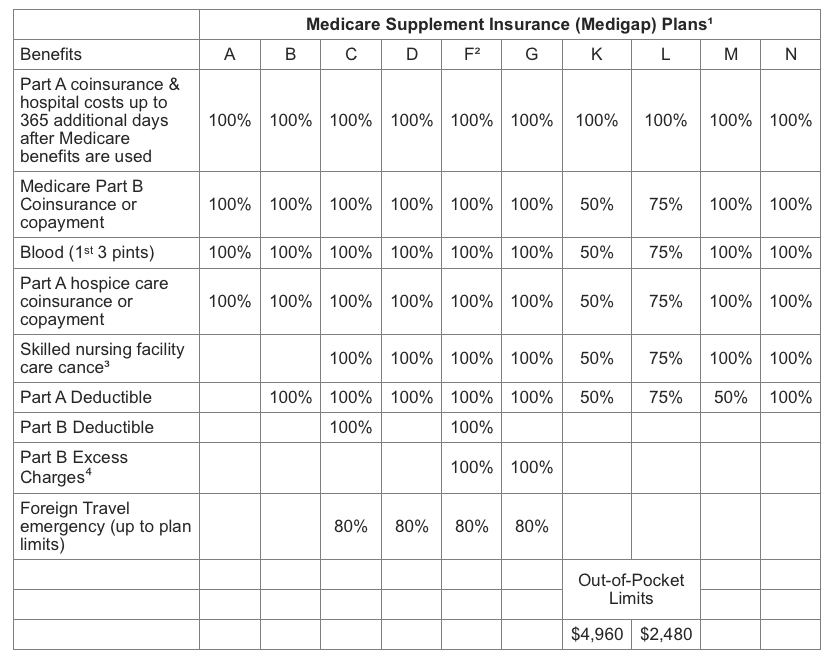+ When do I need to sign up?
Up to 3 months prior to your 65th birthday or other eligibility date* (the sooner the better!). Medicare coverage begins on the 1st of the month, of your birthday month, of your 65th birthday. For example, if your birthday is November 23rd, Medicare would be effective on November 1st. You can sign-up 3 months before your effective date. Using the example above, you could sign-up any time after August 1st. You have a 7-month period (see below) to sign-up to avoid a penalty:

*If you and/or spouse are still working and participate in an employer group health plan, there is no penalty if you sign-up later. When you leave your employer group health plan and lose your employer group plan coverage, you have 8 months from the time your employment ends or the coverage ends (whichever happens first) to sign-up.
+ How do I sign up?
There are three ways you can sign-up:
Call Social Security toll free at 1-800-772-1213 and sign-up over the phone.
Visit your local Social Security office. We suggest you call first to make an appointment: Click here To Find Your Local Social Office Address and Phone #
- Enroll online: Click here to Enroll Online
+ What does Medicare cover & cost?
"PART A" COVERS: In-patient care in a hospital, in-patient care in a skilled nursing facility (not custodial or long-term care), hospice care and home healthcare.
"PART A" COSTS: Most people don’t pay anything for Part A, depending on if they meet the lifetime employment requirement: If you or a spouse have worked at least 40 quarters during your lifetime, there is no monthly premium. People who must pay for Part A, will pay up to $413/month in 2017.
"PART B" COVERS: Doctors’ services, outpatient care lab, x-rays, MRIs, CT scans, EKG/ECGs, etc. chemotherapy, surgery centers, durable medical equipment, preventative care, ambulance and other medical services.
"PART B" COSTS: For those enrolling in Medicare, most will pay $134.00/month (or higher, depending on your income – see the chart below). If you are receiving Social Security benefits, this amount will be deducted from your Social Security benefit payment. If you are not receiving Social Security benefits, you will be billed by Medicare.

+ What is the Foreign Travel Exclusion?
Medicare generally doesn’t cover health care while you’re traveling outside the U.S. (The “U.S.” includes the 50 states, the District of Columbia, Puerto Rico, the U.S. Virgin Islands, Guam, the Northern Mariana Islands, and American Samoa.) There are some exceptions, including cases where Medicare may pay for services you get while on board a ship within the territorial waters adjoining the land areas of the U.S. Medicare may pay for inpatient hospital, doctor, or ambulance services you get in a foreign country in these rare cases: You’re in the U.S. when an emergency occurs, and the foreign hospital is closer than the nearest U.S. hospital that can treat your medical condition.
You’re traveling through Canada without unreasonable delay by the most direct route between Alaska and another U.S. state when a medical emergency occurs, and the Canadian hospital is closer than the nearest U.S. hospital that can treat the emergency.
You live in the U.S. and the foreign hospital is closer to your home than the nearest U.S. hospital that can treat your medical condition, regardless of whether an emergency exists.
+ Are there Different Types of Medicare Plans?
There are two ways you can access your Medicare benefits.
- Original Medicare – Is available everywhere
- Medicare Advantage – Is available in selected areas
Original Medicare – When you first enroll in Medicare, you’ll have Original Medicare, unless you make another choice. It is called “Original Medicare” because it is the same original plan that started in 1965. Original Medicare is operated and administered by the federal government. With Original Medicare, Medicare determines how much they will reimburse health care providers (doctors, hospitals, etc.) for their services. Since it has been the around for so long and because so many people have Original Medicare, all health care providers are very familiar with Original Medicare and how it works. Medicare does not have network like a PPO. Their network is any provider who will accept Medicare. Virtually all hospitals, labs, imaging and other ancillary providers accept Original Medicare. The overwhelming majority of doctors also accept Original Medicare. Original Medicare is accepted in all 50 states. The coverage is the same regardless of where you are. You have total freedom to use any provider you wish and anywhere you wish. Most likely your current doctors will accept Original Medicare. Just to be sure, you’ll want to ask them.
Medicare Advantage – In the late 1990s, Medicare Advantage plans ("Part C") were created. Medicare Advantage plans are not run by Medicare, but are run by insurance companies. However, Medicare does provide regulation of these plans. Both Original Medicare and Medicare Advantage plans cover the same things. The major difference between these two plans is the providers that participate. Medicare Advantage plans have networks like HMOs. Unlike Original Medicare where you can use any provider that accepts Medicare, you must use the providers that are within that insurance company’s HMO network. Medicare Advantage insurance companies receive money up-front from Medicare. Then the insurance companies manage the health care of those covered on their plans. Original Medicare is available anywhere in the US; while Medicare Advantage plans' availability varies by zip code. The chart below will help provide more details on these two options.

+ Original Medicare & Medicare Supplement Plans
Many people prefer the ease and flexibility of being enrolled in Original Medicare. However, if you are contemplating enrolling in Original Medicare, we highly recommend that you do so only if you buy a Medicare Supplement (also called Medigap) plan in tandem with Original Medicare. Original Medicare has deductibles, copays and coinsurance (the % you share when you incur a claim. For example, Medicare pays 80% of a claim and you pay 20%). The portion you pay in deductibles, copays and coinsurance is called your “Out-of-Pocket” expense. Depending on what type of care and treatment you may receive, the “Out-of-Pocket” risks of Original Medicare could become very unaffordable. A Medicare Supplement plan will protect you against this risk.
+ Medicare Supplement Plan Caution
The law provides certain rules that all insurance companies must follow regarding the availability of these plans. If you are covered under “Original Medicare,” the law requires that the insurance company must agree to “Guarantee Issue” the policy in certain circumstances. “Guarantee Issue” means that an insurance company must “guarantee” they will “issue” the policy regardless of a person’s health (i.e. no health questions are asked and you get the policy regardless of any pre-existing health conditions). By law, this “Guarantee Issue” provision occurs during these time frames:
- When you first begin receiving Medicare benefits
- You were covered with a Medicare Advantage Plan and that plan no longer offers coverage in your area;
- You move to a new geographic area where your Medicare Advantage is not available;
- If you joined a Medicare Advantage plan when you were first eligible for Medicare, you can choose any Medicare Supplement within the first year of joining.
+ What types of Medicare Supplement Plans are there?
If you wish to enroll in Original Medicare, you’ll want to buy a Medicare Supplement Insurance (Medigap) plan. Medicare regulates (i.e. all plans, regardless of the insurance company have identical benefits) the design of these plans. The chart below shows the types of Medicare Supplement (MediGap) plans:

¹ These are the plans the plans that are still available. Not all insurance companies offer all of these plans.
² Plan F also can be purchased with a high deductible option. The beneficiary pays the first $2,200 of costs.
³Medicare only covers skilled nursing facility charges when it is not considered custodial care, but when it is considered medically necessary.
⁴ If your doctor does not accept “Medicare assignment” and they can charge up to an extra 15% over the Medicare allowed amount. Plans F & G will cover this excess charge.
+ Prescription Drug (Rx) Coverage (Medicare Part D)
Original Medicare Parts A & B does not offer prescription drug coverage. So, if you are enrolled in Original Medicare, you’ll want to purchase a standalone Part D Prescription Drug plan. Even if you don’t take many prescription drugs, we highly recommend that you purchase a drug plan. Why? 1) They are quite affordable, 2) If you wait and buy a plan after your Initial Eligibility Period (IEP), you’ll pay a lifetime penalty, 3) Drug plans provide great protection in the event you do need a prescription(s). Today there are prescriptions that can treat many medical problems, but many can be very expensive. It is not uncommon to have prescriptions that cost more than $50,000/year.
Medicare does not sell prescription drug plans; however, they do approve and joint venture with insurance companies that offer plans. To enroll in a Part D prescription drug plan, you must have Part A and/or Part B. In California, there are dozens of Medicare-approved Rx plans. These plans vary in price depending on how many and what prescriptions you take. Monthly premiums can be as low as $19.00/month for someone who takes no regular prescriptions to $150+/month for someone who takes a lot of prescription medications regularly. You will pay a deductible and co-pay when purchasing prescription drugs, but Medicare puts a limit on how much someone can pay for the their total out-of-pocket prescription costs during any calendar year.

